
Introduction
In the modern age, where environmental concerns are at the forefront of global conversations, eco-friendly driving has become an essential topic.
With the increasing awareness of climate change and its effects, many UK parents are looking for ways to reduce their carbon footprint and contribute positively to the environment.
Driving, being a significant part of our daily lives, offers a considerable opportunity to make a difference.

This article delves into the importance of eco-friendly driving, its benefits, and how it can help save both fuel and the environment.
Importance of Eco-Friendly Driving
Eco-friendly driving is not just a trend; it is a necessity in our fight against climate change.
The way we drive has a substantial impact on the environment, and adopting sustainable driving practices can lead to a significant reduction in greenhouse gas emissions.
For UK parents, eco-friendly driving means ensuring a better and healthier environment for their children. It also contributes to the long-term sustainability of our planet.
Overview of Benefits
The benefits of eco-friendly driving are multi-faceted.
- Firstly, it helps in reducing fuel consumption, which directly translates to financial savings.
- Secondly, it minimises air pollution, improving the quality of the air we breathe.
- Thirdly, it plays a crucial role in mitigating climate change by lowering carbon emissions.
Additionally, eco-friendly driving practices often promote better vehicle maintenance, which can extend the lifespan of your car.
Driving and the Environment
Driving is an integral part of modern life, but it comes with significant environmental costs.
Understanding the environmental impact of traditional driving is crucial for making informed choices that benefit both our wallets and the planet.
Environmental Impact of Traditional Driving
Traditional driving relies heavily on fossil fuels, such as petrol and diesel, which are finite resources.
The extraction, refinement, and burning of these fuels release a substantial amount of greenhouse gases, primarily carbon dioxide (CO2), into the atmosphere.
This process not only depletes our natural resources but also contributes significantly to global warming.
The production and disposal of vehicles also have environmental implications. Manufacturing cars require vast amounts of energy and raw materials, including metals, plastics, and glass.
The disposal of old cars poses another set of challenges, as they often end up in landfills, releasing harmful chemicals into the soil and water.
Emissions and Air Pollution
One of the most immediate and noticeable impacts of traditional driving is air pollution. Vehicles emit several harmful pollutants, including:
- Nitrogen oxides (NOx)
- Particulate matter (PM)
- Volatile organic compounds (VOCs).
These pollutants contribute to the formation of smog and acid rain, which can harm ecosystems, damage buildings, and pose serious health risks to humans, particularly children and the elderly.

In urban areas, where traffic congestion is common, the concentration of these pollutants can reach dangerous levels.
Air pollution is linked to respiratory problems, cardiovascular diseases, and other health issues.
For UK parents, reducing vehicle emissions means safeguarding their family’s health and well-being.
The Role of Vehicles in Climate Change
Vehicles are a major source of greenhouse gas emissions, accounting for a significant portion of global CO2 emissions.
The burning of fossil fuels in car engines releases CO2, which traps heat in the atmosphere and leads to the warming of the planet.
This phenomenon, known as the greenhouse effect, is the primary driver of climate change.
Climate change has far-reaching consequences, including rising sea levels, more frequent and severe weather events, and disruptions to natural ecosystems.
By adopting eco-friendly driving practices, we can reduce the amount of CO2 released into the atmosphere, thereby mitigating the impact of climate change.
Why Aim to Be an Eco-Friendly Driver?
Embracing eco-friendly driving practices holds numerous advantages, ranging from environmental protection to personal health benefits and significant financial savings.
Understanding these benefits can motivate more individuals, especially UK parents, to make the necessary changes in their driving habits.

Benefits for the Environment
The primary benefit of eco-friendly driving is the positive impact it has on the environment. By reducing the amount of fossil fuels burned, eco-friendly driving practices help lower greenhouse gas emissions.
This reduction is crucial in the fight against climate change, as it directly diminishes the amount of carbon dioxide released into the atmosphere.
Furthermore, less fuel consumption means a decrease in the demand for oil extraction and refinement, processes that are often damaging to ecosystems and wildlife habitats.

In addition to mitigating climate change, eco-friendly driving reduces air pollution.
Emissions from traditional vehicles contribute to the formation of smog and acid rain, which have detrimental effects on both natural and built environments.
By adopting eco-friendly driving practices, such as:
- Maintaining a steady speed
- Avoiding sudden accelerations
- Using alternative modes of transport when possible
we can significantly reduce these harmful emissions and improve overall air quality.
Financial Savings from Reduced Fuel Consumption
One of the most immediate benefits of eco-friendly driving for UK parents is the potential for financial savings.
Fuel is a major expense for most households, and reducing fuel consumption can lead to significant cost reductions.
Techniques such as:
- Smooth acceleration
- Maintaining a steady speed
- Regular vehicle maintenance can improve fuel efficiency, meaning you get more miles per litre of fuel.
Additionally, driving at lower speeds and using the cruise control function on motorways can help maintain optimal fuel efficiency.
Over time, these practices can save a considerable amount of money, which can be redirected towards other household needs or savings.
For parents, this means more resources available for their children’s education, extracurricular activities, or family vacations.
Health Benefits of Reduced Emissions
The health benefits of reduced vehicle emissions are another compelling reason to adopt eco-friendly driving habits.
Air pollution from vehicle emissions is linked to a range of health problems, including:
- Respiratory infections
- Asthma
- Cardiovascular diseases
Children, in particular, are more susceptible to these health issues due to their developing respiratory systems.

By reducing emissions, we can improve air quality, leading to better health outcomes for everyone, especially vulnerable populations like children and the elderly.
‘Eco-safe’ Driving on the Practical Test
Understanding and practising eco-safe driving is not only beneficial for the environment and your wallet but is also increasingly becoming a crucial component of the practical driving test in the UK.
Demonstrating eco-friendly driving techniques can impress examiners and contribute to a successful test outcome.
What is ‘Eco-safe’ Driving?
Eco-safe driving refers to a style of driving that maximises fuel efficiency while minimising environmental impact and improving road safety.
This driving approach involves a combination of smooth, controlled driving techniques and proactive vehicle maintenance.

Key principles of eco-safe driving include:
- Smooth acceleration and braking: Avoiding sudden starts and stops helps maintain a steady flow of traffic and reduces fuel consumption.
- Maintaining a steady speed: Using cruise control on motorways and keeping within speed limits helps to optimise fuel efficiency.
- Anticipating traffic conditions: Looking ahead and planning your route to avoid congestion and unnecessary stops can reduce idling time and fuel use.
- Regular vehicle maintenance: Keeping your vehicle in good condition ensures it runs efficiently, reducing fuel consumption and emissions.
How Eco-Friendly Practices are Evaluated
During the practical driving test, examiners assess various aspects of your driving to determine how well you adhere to eco-friendly practices.
This evaluation is not just about your ability to control the vehicle, but also about how you can drive in a way that is safe, efficient, and environmentally responsible.
Examiners look for:
- Smoothness: Your ability to accelerate and decelerate smoothly, avoiding harsh braking and rapid acceleration.
- Speed control: Consistently driving at an appropriate speed for the conditions and using cruise control when applicable.
- Anticipation and planning: Demonstrating the ability to anticipate traffic flow and plan your driving accordingly to avoid unnecessary stops and starts.
- Gear use: Using the appropriate gear for the speed and driving conditions to maximise fuel efficiency.
- Vehicle maintenance: Ensuring your vehicle is well-maintained, with regular checks on tyre pressure, oil levels, and other essential components.
Tips to Impress Examiners with Eco-Safe Driving
To impress examiners with your eco-safe driving skills, it’s essential to integrate eco-friendly practices into your everyday driving habits. Here are some tips to help you prepare:
- Practice smooth acceleration and braking: Get into the habit of accelerating gently and braking smoothly. This not only saves fuel but also reduces wear and tear on your vehicle.
- Maintain a steady speed: Use cruise control on motorways and avoid fluctuating speeds. Keeping a consistent speed helps to optimise fuel efficiency.
- Anticipate traffic conditions: Always look ahead and plan your route to avoid congestion. Anticipating traffic lights and junctions can help you maintain a smooth driving flow.
- Use the correct gear: Ensure you are in the right gear for the speed and road conditions. Avoid revving the engine unnecessarily, as this can waste fuel.
- Regularly check your vehicle: Keep your vehicle in top condition with regular maintenance checks. Ensure your tyres are inflated to the correct pressure and that your engine is well-tuned.
By adopting these practices, you will not only be well-prepared for your practical driving test but also contribute to a more sustainable and healthy environment.
Green Driving Habits You Can Adopt
Incorporating green driving habits into your daily routine can significantly reduce your environmental impact and enhance fuel efficiency.
These habits are straightforward and can make a substantial difference over time, benefiting both your wallet and the planet.
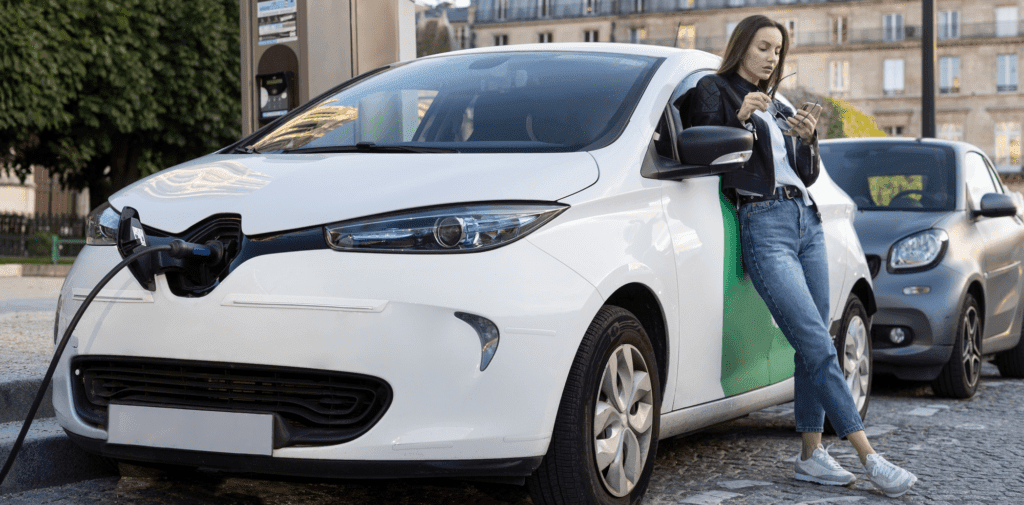
Smooth and Steady Acceleration
One of the simplest yet most effective green driving habits is practising smooth and steady acceleration.
- Abrupt acceleration consumes more fuel and increases emissions.
- By accelerating gently and gradually, you allow the engine to work more efficiently, reducing fuel consumption and emissions.
This practice also decreases wear and tear on your vehicle, leading to fewer maintenance issues and a longer vehicle lifespan.
Additionally, smooth acceleration contributes to safer driving. Sudden acceleration can surprise other drivers and lead to accidents.
By accelerating steadily, you maintain better control over your vehicle and create a safer driving environment for yourself and others on the road.
Maintaining a Consistent Speed
Maintaining a consistent speed is another crucial aspect of eco-friendly driving.
Constantly changing speeds, especially on motorways, can significantly increase fuel consumption.
Using cruise control on long, flat stretches of road helps maintain a steady speed, improving fuel efficiency. It also reduces the stress on your engine and minimises emissions.

Driving at a consistent speed is not only beneficial for fuel efficiency but also for road safety.
It allows you to better anticipate the actions of other drivers and reduces the likelihood of sudden braking or acceleration, which can lead to accidents.
Avoiding Idling
Idling your engine unnecessarily wastes fuel and produces emissions without any benefit.
Modern engines are designed to be turned off and restarted without causing damage, so there is no need to leave your car running while parked or waiting for extended periods.
Turning off your engine when it is safe to do so can save a significant amount of fuel and reduce harmful emissions.
In urban areas, where traffic congestion is common, idling can contribute to poor air quality and increased health risks.
Vehicle Maintenance for Eco-Friendly Driving
Regular vehicle maintenance is essential for ensuring your car runs efficiently and minimises its environmental impact.
Proper maintenance can:
- Improve fuel economy
- Reduce emissions
- Extend the lifespan of your vehicle.

Regular Servicing and Check-Ups
Routine servicing and check-ups are vital for keeping your vehicle in top condition. Regular maintenance includes:
- Oil changes
- Filter replacements
- Engine checks
A well-maintained engine runs more efficiently, consuming less fuel and producing fewer emissions.
Scheduled servicing also helps identify and address potential issues before they become major problems, saving you money on repairs in the long run.
By adhering to the manufacturer’s recommended maintenance schedule, you ensure that your vehicle operates at its optimal efficiency.
Keeping Tyres Properly Inflated
Proper tyre inflation is crucial for fuel efficiency and safety. Under-inflated tyres create more resistance on the road, causing the engine to work harder and consume more fuel.
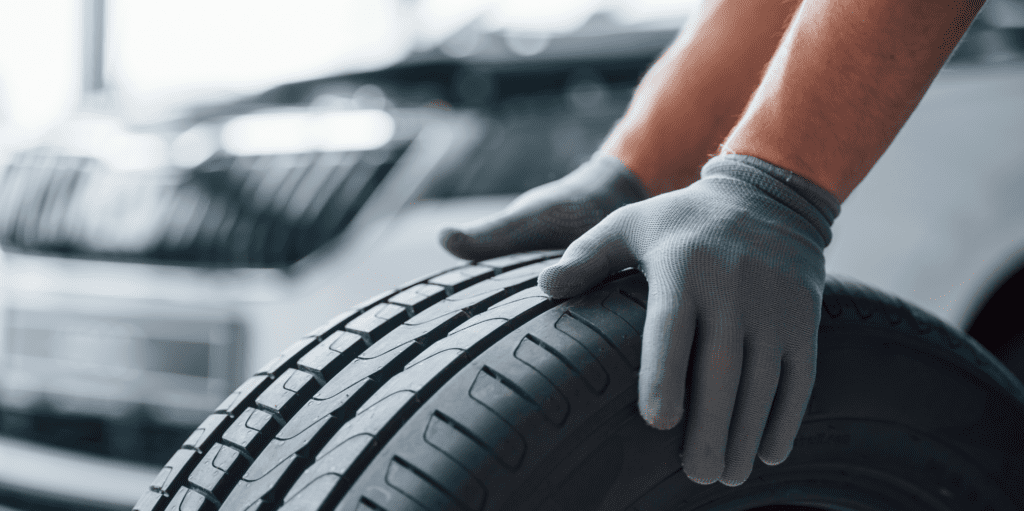
Conversely, over-inflated tyres can lead to reduced traction and uneven wear, compromising safety. Regularly checking and maintaining the correct tyre pressure ensures optimal performance and fuel efficiency.
Properly inflated tyres also enhance driving comfort and extend tyre life. For UK parents, this means a smoother ride for their children and fewer tyre replacements, leading to cost savings and reduced environmental impact.
Using the Right Oil and Fluids
Using the correct oil and fluids for your vehicle is essential for maintaining its efficiency and reducing emissions.
Engine oil lubricates the moving parts of the engine, reducing friction and wear. Using the right type of oil, as specified in your vehicle’s manual, ensures optimal engine performance and fuel efficiency.

High-quality synthetic oils often provide better protection and performance than conventional oils.
Additionally, regularly checking and maintaining other fluids, such as:
- Transmission fluid
- Brake fluid
- Coolant, helps keep your vehicle running smoothly.
Proper fluid levels and quality ensure that your car operates efficiently and safely, reducing the risk of breakdowns and costly repairs.
This not only saves money but also reduces the environmental impact of vehicle maintenance.
By adopting these vehicle maintenance practices, you can significantly enhance your vehicle’s performance and fuel efficiency.
Regular maintenance not only benefits your car but also contributes to a cleaner environment and a safer, more enjoyable driving experience for you and your family.
Planning and Preparing Your Journeys
Proper planning and preparation can significantly enhance fuel efficiency and reduce your environmental impact.
By thoughtfully organising your journeys, you can minimise fuel consumption, save time, and reduce stress, all while contributing to a greener planet.
Route Planning for Efficiency
Effective route planning is a key element of eco-friendly driving. Before setting off, consider the most efficient route to your destination.
This means choosing routes that avoid heavy traffic, roadworks, and areas with frequent stops and starts. Using navigation tools and apps that offer eco-friendly route options can help you find the most efficient path.
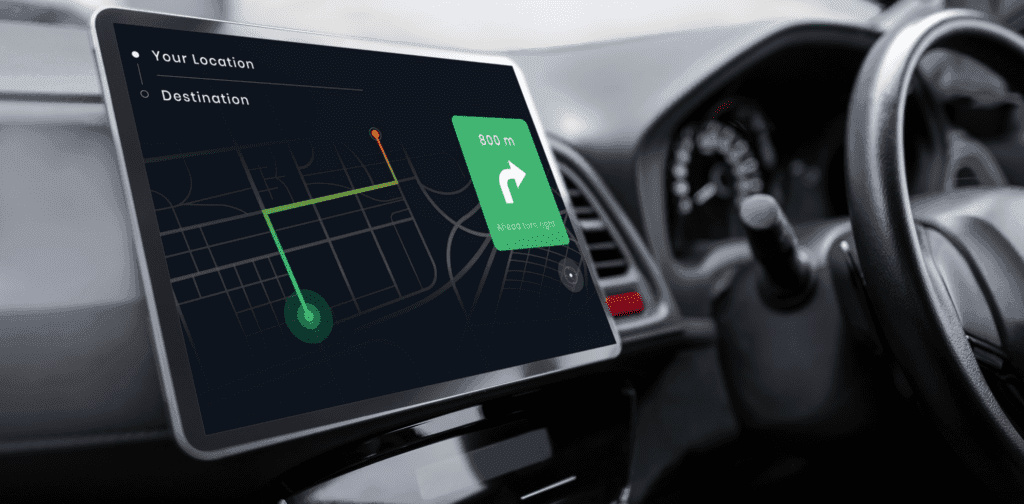
These routes are often designed to minimise fuel consumption by avoiding congested areas and reducing the number of stops.
Efficient route planning not only saves fuel but also reduces wear and tear on your vehicle.
Combining Trips to Reduce Mileage
Another effective strategy for reducing fuel consumption is combining trips. Instead of making several short journeys throughout the day, try to consolidate errands into a single trip.
This reduces the total mileage and the number of times you start and stop your vehicle, both of which contribute to fuel savings.

By planning your trips to cover multiple errands in one go, you can also save time and reduce stress.
For example, if you need to drop off the children at school, visit the supermarket, and stop by the post office, try to plan a route that allows you to complete all these tasks in one trip.
This approach is not only more efficient but also more convenient, making it a practical solution for busy UK parents.
Using Real-Time Traffic Updates
Utilising real-time traffic updates can significantly improve your driving efficiency.
Traffic apps and navigation systems that provide live traffic information can help you avoid congestion, accidents, and road closures, allowing you to choose the most efficient route in real-time.
By avoiding traffic jams and other delays, you can reduce idle time and unnecessary fuel consumption.
Real-time traffic updates can also help you adjust your departure times to avoid peak traffic periods.
Fuel-Efficient Driving Techniques
Adopting fuel-efficient driving techniques is essential for reducing fuel consumption and lowering emissions.
These techniques not only save money but also contribute to a more sustainable environment.
Optimal Gear Usage
Optimal gear usage is a fundamental aspect of fuel-efficient driving. Using the correct gear for your speed and driving conditions can significantly improve fuel efficiency.
Driving in too high or too low a gear can cause the engine to work harder than necessary, increasing fuel consumption.

When driving a manual vehicle, shift up through the gears smoothly and at the appropriate times to maintain optimal engine performance.
For automatic vehicles, ensure that the transmission is functioning correctly and use any available eco-mode features.
By keeping your vehicle in the right gear, you can maximise fuel efficiency and reduce wear on the engine.
Reducing Excess Weight
Reducing excess weight in your vehicle is another effective way to improve fuel efficiency.
Carrying unnecessary items in your car can increase fuel consumption, as the engine has to work harder to move the additional weight.
Regularly check your vehicle and remove any non-essential items, such as:
- Sports equipment
- Luggage
- Heavy tools, that you do not need for your journey.

Additionally, consider the impact of roof racks and bike carriers, which can add weight and create aerodynamic drag. Removing these accessories when not in use can help improve fuel efficiency.
Keeping the car free of unnecessary weight means more space for essential items and a more comfortable ride for the family.
Using Cruise Control When Appropriate
Using cruise control on motorways and long, flat stretches of road can help maintain a consistent speed, which is beneficial for fuel efficiency.
Cruise control reduces the need for constant acceleration and deceleration, allowing the engine to operate more efficiently.
This feature is particularly useful on long journeys, where maintaining a steady speed can significantly reduce fuel consumption.
However, it is important to use cruise control appropriately. On hilly terrain or in heavy traffic, manual control of your vehicle may be more efficient.
Understanding when to use cruise control can help you achieve the best possible fuel economy.
This means less frequent stops for fuel and a smoother, more relaxing driving experience on long trips.
By integrating these fuel-efficient driving techniques into your everyday driving habits, you can significantly reduce fuel consumption and emissions.
These practices not only save money but also contribute to a cleaner, healthier environment for you and your family.
Utilising Technology for Eco-Friendly Driving
Technology plays a pivotal role in promoting eco-friendly driving practices. Leveraging modern tools and innovations can help you drive more efficiently, reduce fuel consumption, and lower your environmental impact. Here are some ways technology can assist you in achieving these goals.
Eco-Driving Apps and Tools
Eco-driving apps and tools have become increasingly popular as they provide real-time feedback on your driving habits.
These apps analyse your driving patterns, including acceleration, braking, and speed, and offer tips to improve fuel efficiency.
Some apps even provide scores or grades for your driving, encouraging you to adopt better practices.
By using these tools, you can gain a better understanding of how your driving habits impact fuel consumption and emissions.
Additionally, eco-driving apps often include features such as route optimisation and traffic updates, helping you plan the most efficient journey.
GPS and navigation systems are essential for efficient route planning. Modern navigation systems do more than just provide directions; they offer:
- Real-time traffic updates
- Suggest alternative routes to avoid congestion, and;
- Can even highlight eco-friendly routes that minimise fuel consumption.
By using these systems, you can reduce idle time and avoid traffic jams, which helps lower your vehicle’s overall emissions.
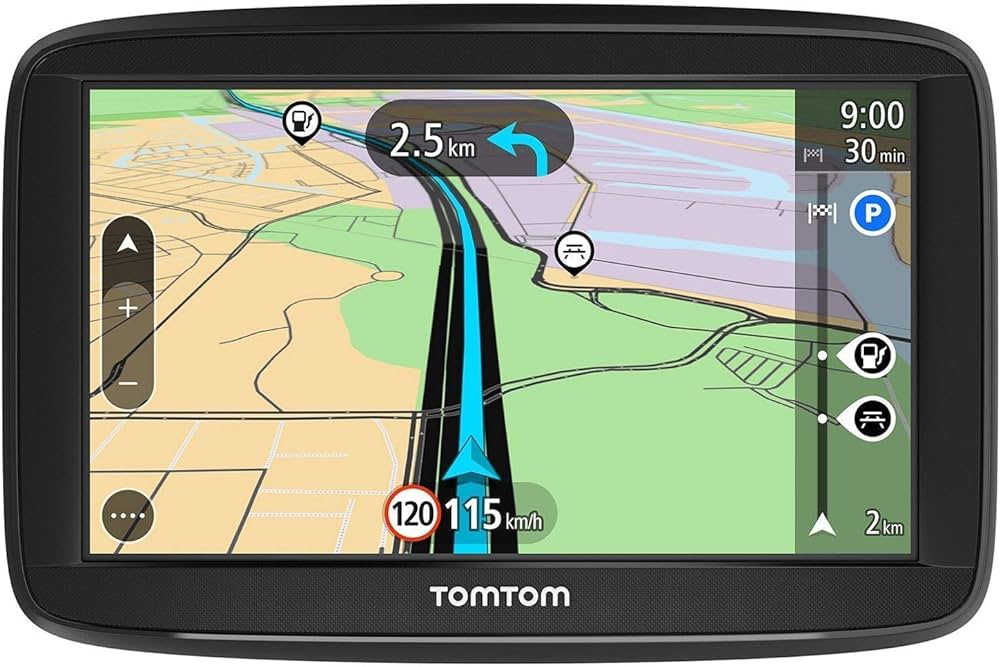
The benefits of GPS and navigation systems extend beyond fuel savings.
These tools can reduce travel time, making journeys less stressful and more predictable.
Whether you’re navigating to an unfamiliar destination or trying to avoid the morning rush hour, GPS and navigation systems can make your driving experience smoother and more efficient.
Exploring Hybrid and Electric Vehicles
- Hybrid and electric vehicles (EVs) represent the forefront of eco-friendly driving technology. These vehicles are designed to minimise environmental impact by reducing or eliminating the need for fossil fuels.
- Hybrid vehicles combine a traditional internal combustion engine with an electric motor, offering improved fuel efficiency and lower emissions compared to conventional cars.
- Electric vehicles, on the other hand, run entirely on electricity, producing zero tailpipe emissions.
Exploring hybrid and electric vehicles can be a significant step towards sustainable driving.
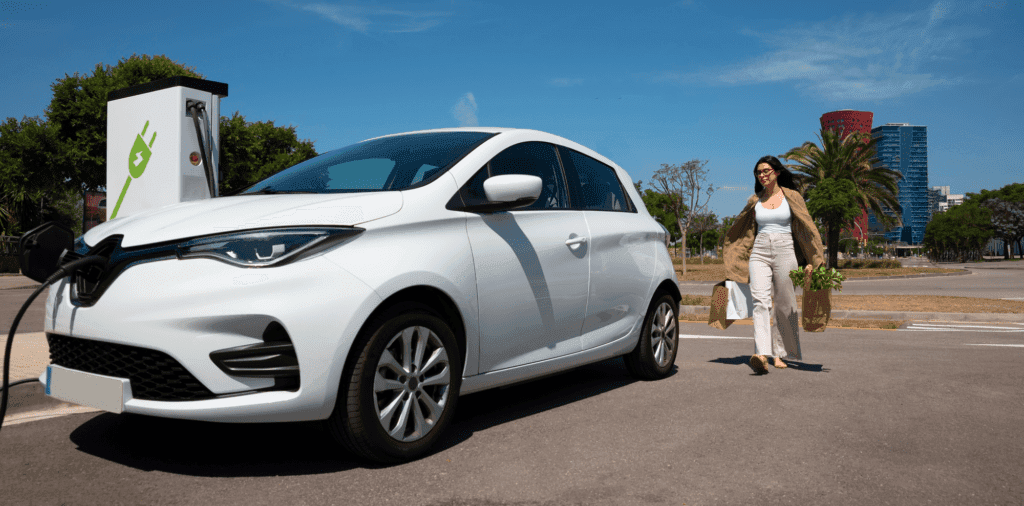
Many models now offer impressive ranges and performance, making them viable options for everyday use.
Transitioning to a hybrid or electric vehicle can lead to substantial savings on fuel costs and maintenance while contributing to a cleaner environment for their children.
Understanding and Choosing Eco-Friendly Vehicles
Choosing the right vehicle is crucial for reducing your environmental impact.
Understanding the differences between hybrid and electric vehicles, as well as evaluating vehicle emissions ratings, can help you make an informed decision that benefits both your family and the planet.
Advantages of Hybrid Cars
Hybrid cars offer a blend of traditional and modern technologies, providing several advantages. One of the main benefits is improved fuel efficiency.
The combination of an internal combustion engine and an electric motor allows hybrids to use less fuel than conventional vehicles, especially in stop-and-go traffic.
The electric motor can power the car at lower speeds, reducing the need for fuel consumption.

Hybrids also produce lower emissions compared to traditional petrol or diesel cars. This reduction in emissions helps decrease air pollution and mitigates the impact of climate change.
Driving a hybrid means contributing to cleaner air and a healthier environment for their children.
Additionally, hybrids often qualify for government incentives and lower road taxes, further enhancing their appeal.
Benefits of Electric Vehicles
Electric vehicles (EVs) offer significant environmental benefits as they produce zero tailpipe emissions.
This means no carbon dioxide, nitrogen oxides, or particulate matter is released into the atmosphere, making EVs one of the cleanest transportation options available.

EVs are powered by rechargeable batteries, which can be charged using renewable energy sources, further reducing their carbon footprint.
The benefits of electric vehicles extend beyond environmental advantages. EVs typically have lower running costs compared to conventional cars.
Electricity is cheaper than petrol or diesel, and EVs have fewer moving parts, which translates to lower maintenance costs.
Owning an EV can lead to substantial savings over the vehicle’s lifetime. Moreover, many cities offer incentives for EV owners, such as free parking and access to low-emission zones.
Evaluating Vehicle Emissions Ratings
When choosing an eco-friendly vehicle, it is essential to evaluate vehicle emissions ratings.
These ratings provide information on the amount of pollutants a vehicle emits, helping consumers make informed decisions.

Emissions ratings are typically displayed on a vehicle’s label and can include information on carbon dioxide emissions, fuel consumption, and other pollutants.
Understanding these ratings can help you choose a vehicle that aligns with your environmental goals.
Vehicles with lower emissions ratings are generally more efficient and have a smaller environmental impact.
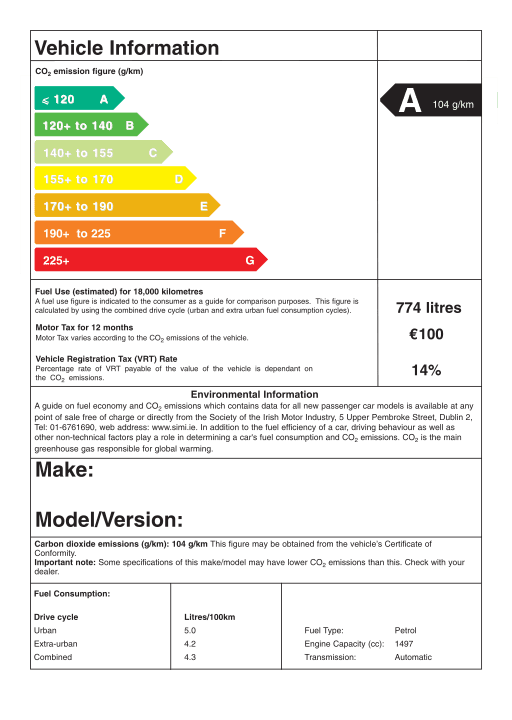
Selecting a car with a good emissions rating means contributing to a cleaner environment.
By understanding the advantages of hybrid and electric vehicles and evaluating emissions ratings, you can make a well-informed decision that supports eco-friendly driving.
These choices not only benefit the environment but also offer financial savings and health benefits, making them a smart option for any family looking to reduce their carbon footprint.
Reducing the Use of Air Conditioning
For learner drivers, understanding the impact of air conditioning on fuel consumption and discovering alternative ways to stay cool can significantly enhance your driving efficiency and contribute to more eco-friendly driving habits.

Impact of Air Conditioning on Fuel Consumption
Using air conditioning in your vehicle can have a notable impact on fuel consumption.
Air conditioning systems draw power from the engine, which requires additional fuel to operate.
On hot days, running the air conditioner can increase fuel consumption by up to 20%, especially in stop-and-go traffic where the engine isn’t running at peak efficiency.
This increased fuel use translates to higher costs and greater carbon emissions, contributing negatively to the environment.
For learner drivers aiming to adopt eco-friendly practices, it’s essential to be mindful of how often and when you use the air conditioning.
Limiting its use can help conserve fuel and reduce your overall environmental footprint.
Alternative Ways to Keep Cool
Instead of relying solely on air conditioning, there are several alternative ways to keep cool while driving.
One of the simplest methods is to open the windows when driving at lower speeds.
This allows natural airflow to cool the interior of the car without additional fuel consumption.
However, be aware that at higher speeds, open windows can create aerodynamic drag, which can also increase fuel consumption.
Parking in the shade or using sunshades can prevent the car from heating up too much while it’s parked.
Wearing light, breathable clothing and staying hydrated can also help you stay comfortable without needing to crank up the air conditioning.
For learner drivers, adopting these alternatives can help you develop habits that are both economical and environmentally friendly.
Proper Use of Ventilation Systems
Understanding how to use your car’s ventilation system effectively can also help keep you cool without excessive reliance on air conditioning.
Most modern vehicles come equipped with ventilation systems that can be adjusted to optimise airflow.
Using the recirculation mode can cool the air inside the car more efficiently, as it reuses the already cooled air rather than pulling in hot air from outside.
Setting the ventilation system to a comfortable temperature and using the fan at an appropriate speed can also help maintain a pleasant environment inside the car.
For learner drivers, mastering the use of these systems can enhance your comfort while driving and contribute to more eco-friendly driving practices.
Carpooling and Ride Sharing
Carpooling and ride sharing are excellent strategies for reducing traffic congestion, lowering fuel consumption, and minimising your environmental impact.
For learner drivers, understanding the benefits and logistics of these practices can be an important part of adopting a sustainable approach to driving.

Benefits of Carpooling
Carpooling offers numerous benefits, both environmental and personal. By sharing a ride with others, you can significantly reduce the number of vehicles on the road, leading to decreased traffic congestion and lower overall emissions.
This reduction in traffic can also make your commute more pleasant and less stressful.
From a financial perspective, carpooling can help you save on fuel costs and vehicle maintenance, as the expenses are shared among the passengers.
Additionally, carpooling provides an opportunity to socialise and network with others, making your commute more enjoyable.
For learner drivers, participating in carpooling can be a practical and environmentally responsible way to reduce driving-related costs and contribute to a greener future.
How to Organise a Carpool
Organising a carpool is relatively straightforward and can be done with a bit of planning and communication.
Start by identifying potential carpool members, such as classmates, colleagues, or neighbours who have similar routes and schedules.
Once you have a group, agree on a schedule that works for everyone, including pick-up and drop-off times and locations.

Establish clear guidelines for the carpool, such as driving responsibilities, cost-sharing arrangements, and rules for punctuality and behaviour.
Communication is key to ensuring that everyone is on the same page and that the carpool runs smoothly.
For learner drivers, organising a carpool can be a valuable experience in planning, responsibility, and teamwork.
Popular Ride-Sharing Apps
Ride-sharing apps have revolutionised the way we think about transportation, offering convenient and efficient alternatives to traditional driving.
Apps such as Uber, Lyft, and BlaBlaCar connect drivers with passengers who are heading in the same direction, allowing for shared rides that reduce the number of vehicles on the road.
These apps often provide features such as fare splitting, route planning, and user ratings, making it easy to organise and participate in ride-sharing.
For learner drivers, using ride-sharing apps can be a practical way to reduce driving costs, minimise environmental impact, and gain experience with modern transportation solutions.
By adopting these practices, learner drivers can make a significant contribution to eco-friendly driving while enjoying the benefits of reduced costs and improved convenience.
Embracing these strategies not only helps the environment but also sets the foundation for sustainable driving habits in the future.
Alternative Transportation Options
Exploring alternative transportation options can significantly reduce your environmental impact and promote a healthier lifestyle.
For learner drivers, understanding the benefits of public transport, cycling, walking, and using electric scooters and bikes can provide valuable insights into sustainable travel choices.
Benefits of Public Transport
Public transport offers numerous advantages, making it a key component of sustainable urban living.
Using buses, trains, and trams can significantly reduce the number of private vehicles on the road, leading to decreased traffic congestion and lower emissions.

Public transport systems are generally more fuel-efficient than individual car journeys, as they carry many passengers simultaneously, maximising the use of energy resources.
For learner drivers, public transport provides an affordable and reliable alternative to driving, especially in urban areas where parking can be limited and expensive.
It also offers the opportunity to relax, read, or work during your commute, making your travel time more productive.
Understanding and utilising public transport can enhance your mobility while supporting eco-friendly practices.
Cycling and Walking
Cycling and walking are not only eco-friendly modes of transport but also offer significant health benefits.
These activities produce zero emissions, making them the greenest travel options available.

By choosing to cycle or walk for short journeys, you can reduce your carbon footprint and contribute to a cleaner environment.
Cycling and walking also promote physical fitness and mental well-being. Regular physical activity can improve cardiovascular health, strengthen muscles, and reduce stress.
For learner drivers, incorporating cycling and walking into your routine can provide a refreshing change from driving, help you stay active, and save money on fuel and parking fees.
Using E-Scooters and Electric Bikes
E-scooters and electric bikes have emerged as popular alternatives to traditional vehicles, offering a convenient and eco-friendly way to navigate urban areas.
These electric-powered options produce zero emissions during operation and are often more energy-efficient than cars.

They can be particularly useful for short to medium-distance trips, where using a car might be unnecessary.
E-scooters and electric bikes are also cost-effective, with lower operating costs compared to petrol or diesel vehicles.
They can help you avoid traffic congestion and make parking easier. For learner drivers, using e-scooters and electric bikes can provide a flexible and sustainable transportation option that complements other modes of travel.
Government Incentives and Support
Understanding the government incentives and support available for eco-friendly driving can help learner drivers make informed decisions about their transportation choices.
These incentives often include grants, subsidies, tax benefits, and local initiatives designed to promote sustainable practices.
Available Grants and Subsidies for Eco-Friendly Vehicles
The UK government offers various grants and subsidies to encourage the adoption of eco-friendly vehicles.
These financial incentives can significantly reduce the initial cost of purchasing electric or hybrid cars.
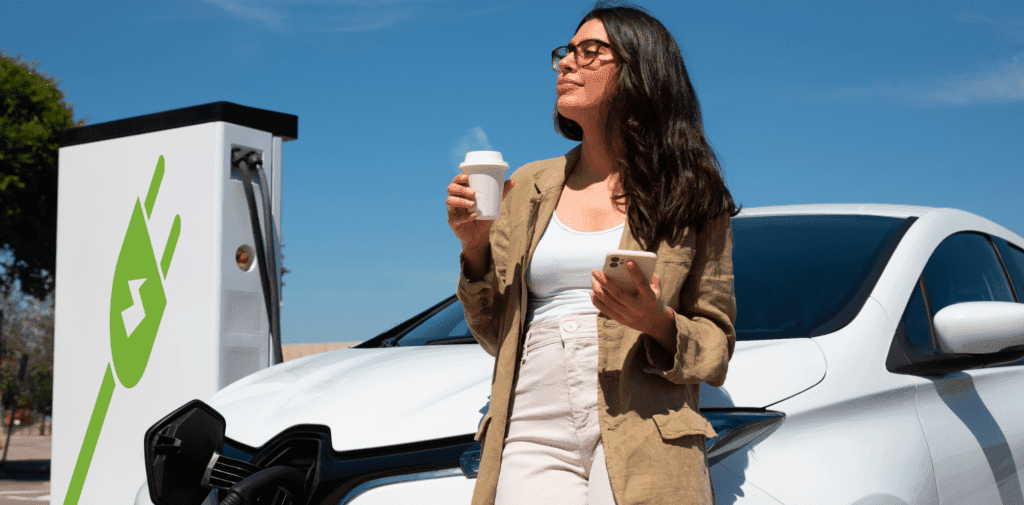
The Plug-in Car Grant, for example, provides a discount on the purchase price of eligible electric vehicles, making them more affordable for consumers.
Additionally, there are grants available for installing home charging points for electric vehicles, further supporting the transition to greener transport.
For learner drivers, taking advantage of these grants and subsidies can make it easier to invest in an eco-friendly vehicle and reduce long-term running costs.
Tax Benefits for Green Driving
Tax benefits are another important aspect of government support for green driving. The UK offers various tax incentives to encourage the use of eco-friendly vehicles.
For instance, electric vehicles are exempt from the annual road tax (Vehicle Excise Duty), and hybrid vehicles often benefit from lower tax rates compared to traditional petrol or diesel cars.
There are also company car tax benefits for employers and employees who choose low-emission vehicles.
These tax incentives can result in significant savings, making eco-friendly vehicles an attractive option for learner drivers looking to minimise their environmental impact and reduce costs.
Local Initiatives and Support Programs
Many local authorities in the UK implement initiatives and support programs to promote sustainable transportation.
These programs may include the development of cycling infrastructure, such as dedicated bike lanes and secure parking, to encourage more people to cycle.
Some cities offer incentives for using public transport, such as discounted fares or free travel passes for certain groups.
Local initiatives may also include car-sharing schemes, park-and-ride facilities, and the installation of electric vehicle charging points in public areas.
For learner drivers, participating in these local programs can provide practical support for adopting eco-friendly driving practices and contribute to the overall sustainability of their community.
By exploring and utilising these alternative transportation options and government incentives, learner drivers can significantly reduce their environmental impact, save money, and support the transition to a more sustainable future.
Embracing these practices not only benefits the individual but also contributes to the broader goal of creating a cleaner and healthier environment for everyone.
Frequently asked questions
Eco-friendly driving, also known as green driving, involves adopting driving habits and vehicle maintenance practices that reduce fuel consumption and carbon emissions.
This includes driving smoothly, maintaining a steady speed, reducing idling, and ensuring your vehicle is properly maintained.
By adopting eco-friendly driving techniques, you can improve your vehicle’s fuel efficiency, meaning you’ll spend less on petrol or diesel.
Additionally, reducing wear and tear on your car can lower maintenance and repair costs, leading to significant long-term savings.
Simple habits include smooth and steady acceleration, maintaining a consistent speed, and avoiding unnecessary idling.
Regularly servicing your vehicle and keeping tyres properly inflated are also crucial for maintaining fuel efficiency.
Using air conditioning can increase fuel consumption by up to 20%, as it requires additional power from the engine.
To save fuel, use the air conditioning sparingly and consider alternative ways to keep cool, such as opening windows at low speeds or using the car’s ventilation system effectively.
Public transport reduces the number of vehicles on the road, leading to lower traffic congestion and emissions.
It’s also cost-effective and allows you to relax or be productive during your journey.
For learner drivers, using public transport can be a practical way to reduce environmental impact.
Effective route planning can help you avoid traffic congestion and reduce mileage.
Combine multiple trips into one journey to minimise the distance travelled and use real-time traffic updates to choose the most efficient route.
This approach can save both time and fuel.
Hybrid and electric vehicles offer significant environmental benefits, including reduced emissions and lower fuel consumption.
Electric vehicles produce zero tailpipe emissions, making them the greenest option.
Both types of vehicles can also lead to financial savings through lower running costs and maintenance.
Yes, the UK government offers various grants and subsidies to support the purchase of eco-friendly vehicles.
These include the Plug-in Car Grant, which reduces the cost of eligible electric vehicles, and grants for installing home charging points.
There are also tax benefits for owning low-emission vehicles.
Carpooling reduces the number of cars on the road, leading to lower emissions and less traffic congestion.
Sharing rides with others also means shared fuel costs and fewer individual car journeys, making it a cost-effective and environmentally friendly transportation option.
Eco-driving apps provide real-time feedback on your driving habits, offering tips to improve fuel efficiency and reduce emissions.
These apps can help you monitor and adjust your driving style, plan efficient routes, and stay informed about traffic conditions, making eco-friendly driving easier to achieve.



